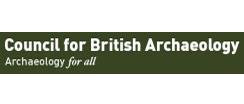Romans
This list consists of lesson plans, activities and ideas to support the teaching of science through the topic of the Romans. It contains ideas for how to link science to the topic, tips on using the resources, suggestions for further use and background subject knowledge to support teachers in delivering the science objectives through this topic. Resources support the teaching of the science topics digestion, keeping healthy, teeth, light and sound. This enables teachers to choose which aspect of science they would like to teach within the overarching topic.
Visit the primary resources for cross curricular topics webpage to access all resource lists:
https://www.stem.org.uk/cross-curricular-topics-resources
- ALL
- Teacher guidance
- Video
- Experiment
- Activity sheet
Teacher guidance
Super Athletes (Ages 7-9)
In Roman times boys engaged in lots of sporting activities, girls didn't do as many. You could carry out a survey in class to see if this is true today? Are some sports more popular with girls than boys? The legs for leaping activity Discuss how body differences might give advantages in different sports and investigate whether there is a relationship between leg length and jump distance.
Fake Poo
What could be more fun, then being a detective investigating 'Fake poo' Investigate the diets of ancient cultures using safe 'fake poo'. The notes include recipes for making Aztec, Tudor, Viking and Roman poo. If just learning about Romans, you could adapt your poo samples to include diet of different types of Romans, for example linking to the above resource you could include Roman senator, soldier, laundry boy and child. Children could then work scientifically to identify each of the different people from their poo! As well as developing investigative skills, the fake poo can lead onto a discussion of how modern diets differ from ancient ones.
Video
Making Shadows
This video explores how shadow puppets can be used to explore light, shadows and storytelling.The way characters appear and disappear illustrates how shadows are formed and how they change when objects are put in front of a light source. Children could make their own puppets to tell a story. They could work scientifically to investigate what happens to shadows when the light source moves further away or closer to the puppet.
Experiment
Sounds Like Science
Romans enjoyed listening to and making music. Between banquet courses music may have been played as entertainment for guests. This could be an opportunity to investigate sound and how instruments produce sound. Children could create an instrument on which the notes may be changed, other activities in this pack look at how vibrations travel through different materials, creating animal noises using voices and instruments, muffling sound, amplifying sound, investigating rhythm and making a speaker.
Activity sheet
Digestive System Experiment
This short film clip demonstrates a practical experiment which recreates the digestion process in the classroom. Using household items such as paper cups, orange juice and a pair of tights, this demonstration enables children to visualise the process of digestion in an engaging, practical way.
The Roman Banquet
In this activity children match foods to the food groups and think about what each type of food provides the body with. They then use food cards from Roman and compare them with modern times. They then plan a day's diet for a Roman senator, soldier, laundry boy and child thinking about the types of foods they will require for their age and lifestyle. The links to Romans is really useful in this resource and the activities, but I would be careful when using the photographs of different foods and create your own pictures of food types. The fats group shows only foods which are a source of animal fat: milk animal fats such as milk, cheese, yoghurt which presents a skewed perspective, add in some plant oils such as olive oil. Also eggs and fish will contain some vitamins and minerals, but are primarily a source of protein.
Seeds and plant growth discovery pack
In Seed detectives children are shown highly magnified images of different seeds taken with an electron microscope. Children could predict what the images are then make drawings of them. Show children the actual seeds and try and match them to their images in small groups.
In Seed dispersal children make predictions about their method of dispersal based on their structure. Model wind dispersal in class by having a group of children in the centre of the room representing a plant containing seeds. Individual seeds could be blown away to different areas within class. This idea could always be used to simulate other methods of dispersal. This activity could be linked to the way in which some seeds from non-native British plants found their way in here, carried across the sea in imported goods.







